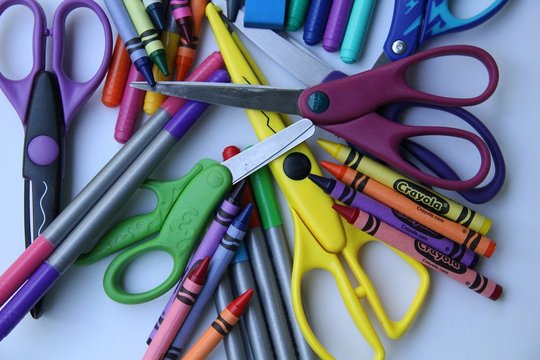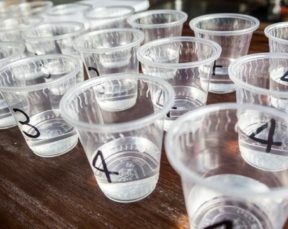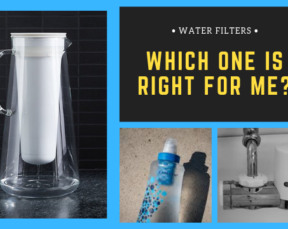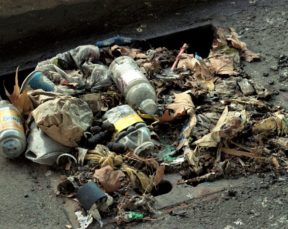By: Val Thorpe, Director of Communications and Membership
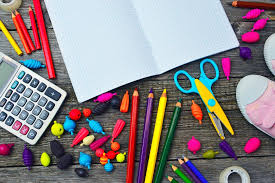

Since you’re no longer using plastic bags at the grocery store (right?) you may have a few paper bags in your kitchen (sometimes we forgot to put our reusable bags in the shopping cart). Why not put them to good use and transform them into book covers? They’re free and offer a big blank space for some creative doodling.
1. School clothes – check out consignment shops
Remember that growth spurt I mentioned earlier? It’s a fact, kids typically outgrow most of their clothing before they wear out. The Three R’s, “Reduce, Reuse, Recycle” appear in their order of importance. Applying the Three R’s to this scenario, consider this: Reduce – get just the basics. Don’t get caught up in fashion trends that are over before they hit the washing machine. Reuse: rather than purchasing new, consider shopping at consignment shops, flea markets and thrift stores. You may be surprised at the variety of gently used clothing you can get for a fraction of what you would spend at a retail store. Or better yet, check if your community has a “Swap, Don’t Shop” event where you can shop at no cost. Recycle: if your child’s clothing is still in good shape, donate it. Keep the cycle going.
2. Take stock of what you already have before buying more
If you’re like most of us, you have accumulated dozens of pencils, pens, erasers, barely used notebooks, rulers, etc. Take a good look at the inventory of these supplies that can be used again. More often than not, a notebook will have fewer used pages and more clean, blank pages. Simply tear out the used pages and voila! New notebook. Additionally, if your child’s backpack and lunchbox are still fully functional, save some room in the landfill and use them again! If you truly need to purchase supplies, make a list and stick to it.
3. Look for non-toxic and eco-friendly school supplies
As we become more aware as a society, a growing number of retailers are carrying eco-friendly school and office supplies. Recycled pencils, markers, paper, and refillable or recycled pens can be found right there on the shelf next to the traditional supplies.


Backpacks: Vinyl contains chemical additives such as phthalates that have been linked to health issues. Congress banned phthalates in children’s toys, yet shockingly these chemicals are widespread in school supplies like backpacks, lunch boxes, and binders. Look for natural canvas or those made of recycled PET (PET has been approved as “safe for contact with foodstuffs and beverages by the FDA, Health Canada, the European Food Safety Authority and virtually every other health-safety agency in the world.”) Avoid the shiny, plastic types that often contain PVC.
Binders – Like backpacks, most 3-ring binders are made from vinyl. Look for brands labeled “PVC-free.”
Crayons – Choose crayons that have been manufactured in the United States. Some crayons that are imported from China have been found to be contaminated with asbestos.
4. Buy or rent used textbooks
Buying a new textbook is like buying a new car – it depreciates the moment you take possession of it. You’ll find big savings by purchasing or renting used books from campus bookstores and online. You’ll also be part of the solution by reducing the number of books being printed, thus helping to save millions of trees.
5. Pack lunches – get the kids involved
This is a great opportunity to ensure your child is getting proper nutrition while saving so much waste and space in landfills. The average elementary school disposes of thousands of pounds of lunch waste every year. Imagine the environmental impact if even half the parents chose to pack a whole food lunch in a reusable lunch box with a reusable bottle of water or milk – not to mention the health benefits to eating whole food over processed. Involve your kids in choosing the ingredients so they’re more likely to eat it all. There are plenty of websites dedicated to finding healthy ideas, so take a moment and do some homework of your own!
6. Switch to a stainless-steel lunch box and water bottle
Most plastic lunch boxes and water bottles contain toxic chemicals such as BPA (Bisphenol A), PVC (Polyvinyl chloride), or phthalates (a group of chemicals used to make plastics more flexible and harder to break) that can cause health problems. Since plastic is also made from petroleum, it’s also an environmental pollutant, even if it’s “BPA-free.” Stainless-steel items will last for many years, are easy to wash, and best of all, won’t leach toxic plastic chemicals into your child’s food.
7. Rethink hand sanitizers
Classrooms are often stocked with hand sanitizers to help reduce the spread of germs, but many also contain toxic chemicals. Look for natural hand sanitizers, check out simple recipes to make your own, or go over the basics of the tried and true soap and water method.
8. Getting to and from school
If you live close to the school, arrange a “walkpool” or a “walking bus,” where you rotate the responsibility of chaperoning a group of children to and from school. Aside from the environmental benefits, everyone gets some good exercise. Another option is good old-fashioned carpooling with your neighbors.
9. Don’t idle your car in front of school
If you’re stopped for more than 30-seconds, it’s more fuel efficient to turn off your engine and restart it when your child arrives than to keep it idling. Also, consider the amount of pollution being emitted from all the cars and busses idling in front of the school. Your child is walking through a cloud of toxins. So cut your engine and ask the school to enforce a “no-idling” policy.
10. Make “going green” a teaching moment
Following these tips can spark important conversations – a little schooling before school, if you will. Be prepared for some pushback, but don’t worry. You have the health of their future on your side. Embrace this opportunity to get your child thinking about their own impact on the environment, and how they can make a difference. It’s never too early to plant that seed!
Happy new school year!
